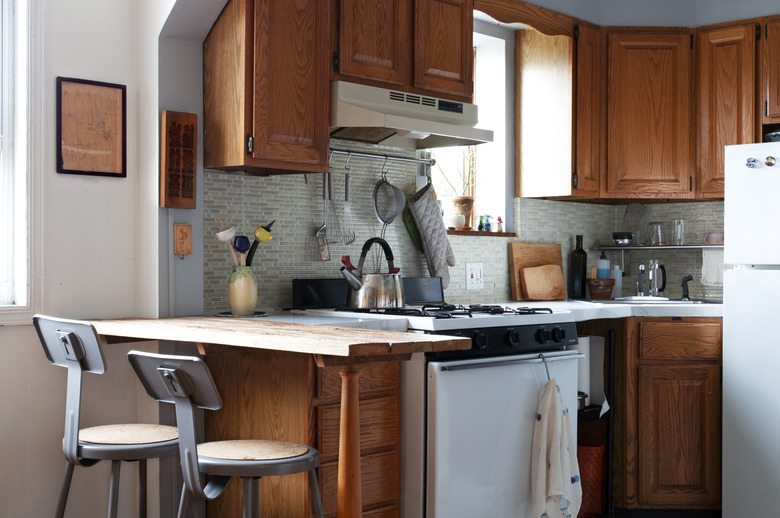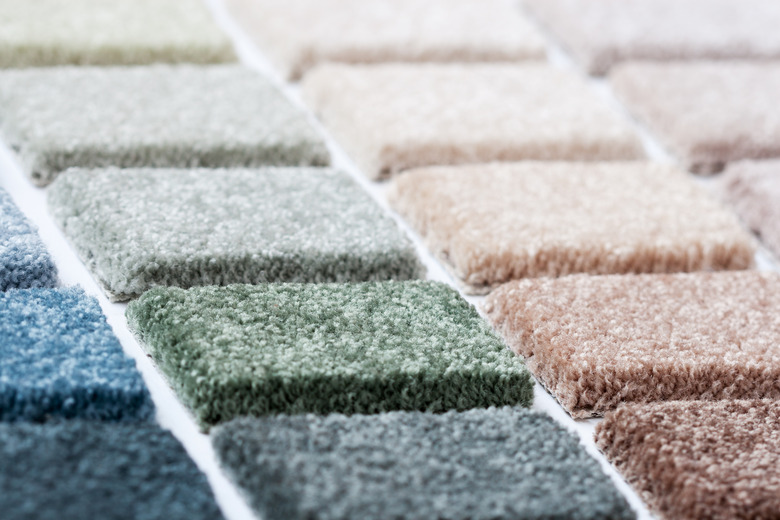Kitchen Carpet Tiles: A Homeowner's Comprehensive Flooring Guide
Most people view carpeting and kitchens to be a bad match due to the many potential cleaning and staining issues. However, carpet tiles have become increasingly popular in the kitchen, as they provide many of the benefits of wall-to-wall carpeting without the problems associated with carpet in an area prone to spills and moisture. In fact, the very nature of carpet tiles means they may be the only carpet that makes sense to install in your kitchen.
Pros of Kitchen Carpet Tiles
Pros of Kitchen Carpet Tiles
While the most carpeting people would traditionally install in the kitchen was a basic area rug, carpet tiles are now offering many of the same benefits — only they can fit perfectly in any space, and they stay in place better. In fact, there are many pros to installing carpet tiles in the kitchen.
- Carpet tiles were originally made for commercial purposes in
high-traffic areas, meaning they are made from durable materials that can
survive more foot traffic than a typical living room carpet, making them a good
choice for areas where you will be walking a lot, like the space between your
refrigerator, stove and sink. For best results, get padded carpet tiles, which absorb
impact and better protect the fibers of the carpet. - Hard flooring like tile, hardwood or laminate can be
straining on the feet, knees and back, which can make cooking and cleaning
difficult. As Milliken & Company points out, padded carpet
tiles can reduce muscle fatigue by as much as 24 percent. - Since floor tile is one of the most common flooring options
in the kitchen, many homeowners can simply peel and stick the carpet right on
their existing flooring. - The backing of carpet tiles is mold- and bacteria-inhibiting,
the fibers are moisture-resistant and many products are sold with enhanced
stain resistance, making them a great option for the kitchen. It is best to
avoid wool in the kitchen, though, as it does not do as well with excessive
moisture. - Because this type of carpet installation is so easy to DIY and
the tiles can be placed anywhere, you can easily install the flooring in select
areas of your kitchen rather than wall to wall, creating a modern look that beats the traditional area rug. - This modular carpeting option also comes in many modern
colors, patterns and textures, meaning it can fit in
with almost all decor. - Carpet tiles are affordable, generally
costing around $1 to $3.60 per square foot. - Carpet squares are easy to clean and can be vacuumed easier
than an area rug. If they do get soiled, tiles can be picked up and washed
in the sink, making the kitchen a rather convenient place to install them. - If a carpet tile is too damaged to wash, it can be
replaced easily rather than needing to replace the entire carpet, and the tiles
are recyclable.
Cons of Kitchen Carpet Tiles
Cons of Kitchen Carpet Tiles
Of course, there are some downsides to using carpet tiles in the kitchen as well. Before you place an order, it's important to consider these negatives:
- Even carpet tile manufacturer FLOR notes that its product
cannot be installed on all floors. If you have soft floors, such as those with carpeting
or padding; floors covered with paint, solvent-based seal, vintage varnish
finish or oil-based finish; unfinished wax floors; or unsealed concrete subfloors,
you cannot use carpet tiles. - While the backing of carpet tiles may inhibit mold and
bacteria, the carpet fibers can hold on to food spills, creating unsanitary conditions if not properly cleaned. - Although carpet tile is water-resistant, it can still be
damaged and stained by water. - Cheaper carpet tiles can start to fray along the edges after
much wear. This can give the floor a broken-up appearance that can look cheap.
While you can replace tiles as they become worn, it's often better to invest in
high-quality tiles that will not fray. - Carpet tiles can become warped due to extreme temperatures
or excess moisture. This can also result in a broken-up appearance. - Similarly, improperly installed carpet tiles can look noticeably
broken up, with seams appearing uneven. While some people don't mind their
carpet tiles looking like tiles, others want the appearance of a full carpet,
but improper installation can make this impossible. - Long-term exposure to sunlight can cause color fading, which
may result in uneven coloring along the tiles. Using curtains or UV treatments
on your windows can reduce this problem.
Installing Carpet Tiles
Installing Carpet Tiles
Putting carpet tiles in your kitchen is a simple DIY project, especially if you only want to install the tiles in place of an area rug. Always follow the manufacturer's instructions for installation, particularly when it comes to adhesive, but the basic process is as follows:
- Clean and inspect your floor. Be sure to check that your flooring is flat and compatible
with carpet squares. If the floor is appropriate and even, clean it thoroughly
and let it fully dry before installing. - Plan your pattern.
One benefit of carpet tiles is that they are modular and can be installed in a
variety of colors and patterns. Lay out your tiles the way you want to install
them without sticking them down to visualize how they look on your floor and rearrange
them according to your taste. If you want your flooring to be centered between
the walls or cabinets, be sure to measure the area to find the center rather
than eyeballing it. - Trim tiles. When
carpet squares need to be trimmed to fit in a particular area, cut tiles with a
utility knife, slicing from the back side. - Lay your tiles.
Start with the center tile and work row by row from there. Peel-and-stick tiles just need to have the backing peeled and stuck to the ground, whereas FLOR and other manufacturers use adhesive dots on the corners of each tile that stick only to the tiles and not to the floor. To use these, just peel a dot from the sticker backing and place a fourth of the dot under each tile's corner where they will connect.
Caring for Carpet Tiles
Caring for Carpet Tiles
While carpet tiles are easy to clean, they still require some basic maintenance and will need to be spot cleaned as necessary. Keeping your floors looking nice is easy with the following practices:
- Vacuum the entire floor regularly.
- To spot clean after a spill, scrape up any solids and soak
up liquid with a clean towel, blotting from the outside in. Then, use a solvent,
applying the cleaner to your cloth, not directly on the spot. Use a brush or
sponge to agitate the spill area. When clean, rinse thoroughly and dry the spot
with a hair dryer. - To clean an individual tile, remove the tile and use a mild
detergent to agitate the fibers with your hands. Rinse fully to remove all
detergent and allow the tile to fully dry before reinstalling. - If the entire carpet seems soiled, use a steam cleaner and pH-neutral detergent,
according to manufacturer instructions.


